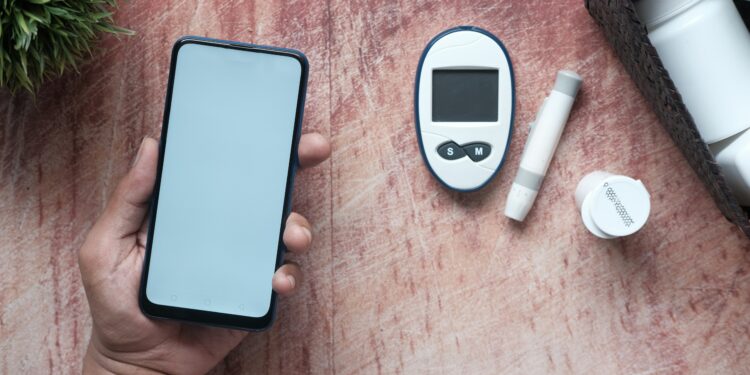The modern stethoscope fits around the wrist. Sleek, charged, and GPS-enabled, wearable health devices like the Apple Watch, Fitbit, Oura Ring, and Garmin smart trackers have quietly transitioned from fitness accessories to perceived medical assistants. They buzz when your heart rate spikes, graph your sleep patterns with colorful curves, and report your blood oxygen like a lab-on-demand. For many, these devices are the first step toward preventive care. But for clinicians, a question looms: when should we focus on the data—and when should we focus on the symptoms?
The use of wearable devices to monitor health metrics like heart rate, sleep patterns, and physical activity is becoming more widespread. But as the sensor-to-consumer pipeline becomes increasingly seamless, it becomes harder to distinguish signal from noise, and symptom from screen. When does data actually help clinicians treat patients—and when does it risk obscuring the clinical picture altogether?
The Wearable Wellness Economy
By 2025, the global market for wearable medical devices is expected to exceed $60 billion, according to Statista. More than 1 in 4 American adults now wears a smartwatch or fitness tracker. Originally targeted toward fitness enthusiasts, these devices are increasingly marketed for broader health concerns—detecting atrial fibrillation, monitoring sleep disorders, identifying stress patterns, and even guiding recovery from chronic illnesses.
Big Tech is investing heavily in this vision. Apple’s Health app consolidates a trove of user data, from ECG waveforms to fertility estimates. Oura integrates sleep scores with menstrual cycle predictions. Fitbit offers “Daily Readiness” scores that blend heart rate variability with activity and sleep metrics. The narrative is clear: your body is a dashboard, and your health is a stream of measurable insights.
But clinicians are beginning to ask a different question: Are these numbers helping us treat the patient—or simply making them anxious?
Symptoms vs. Screens: When Should Data Lead?
Consider the case of a 38-year-old man presenting with fatigue and palpitations. His Apple Watch reports elevated heart rates during sleep, a drop in heart rate variability, and multiple spikes in respiratory rate. Yet in clinic, his ECG is normal, blood tests are unremarkable, and physical exam unremarkable. Is he anxious—or is something truly wrong?
This diagnostic gray area—where subjective symptoms are amplified or even caused by wearable-reported “abnormalities”—is increasingly common. A 2023 paper in the Journal of Medical Internet Research described this as “data-driven patient distress”, in which health anxiety is exacerbated by excessive tracking of metrics without clinical context.
Wearable data is not inherently harmful, but it becomes problematic when overinterpreted—by patients or by providers. As Dr. Eric Topol, a prominent digital health researcher at Scripps Research, notes: “Most wearable data is directionally informative but not diagnostically definitive.” It can prompt useful questions, but rarely offers answers without supporting clinical evidence.
When Data Becomes Noise
Not all biometric data is created equal. Some metrics are clinically validated, while others are closer to wellness folklore.
- Heart rate and heart rate variability (HRV) have known associations with fitness and stress, but readings can vary significantly depending on body position, hydration, or even wrist hair.
- Sleep tracking claims often far exceed the evidence. Consumer wearables use accelerometers and sometimes optical sensors to estimate sleep stages—yet a 2022 study in Sleep Health found that these estimates correlate poorly with polysomnography, the gold standard for sleep studies.
- Blood oxygen levels (SpO2), introduced on Apple Watches and some Fitbits during the COVID-19 pandemic, have low sensitivity and specificity in people with darker skin tones, raising concerns about racial disparities in data accuracy (NEJM, 2020).
The illusion of precision may be the most dangerous byproduct of wearable tracking. Just because a metric is numerically presented does not mean it is medically meaningful. Worse, the pseudoclinical veneer can prompt self-diagnosis, unnecessary testing, or resistance to physician guidance when data and symptoms don’t align.
Clinical Relevance: Context is Everything
To be clear, wearables can and do provide clinical value—particularly when integrated into formal healthcare frameworks.
- Post-operative monitoring of heart rate and mobility has been shown to predict recovery outcomes.
- Atrial fibrillation screening via ECG-enabled smartwatches has demonstrated moderate sensitivity, particularly in older adults at risk.
- Remote patient monitoring (RPM) programs for chronic conditions like heart failure and COPD have been associated with reduced hospital readmissions.
But in all these cases, what makes the data valuable is contextual interpretation. Algorithms alone do not substitute for clinical reasoning. A 90 bpm resting heart rate in an anxious teen is not the same as in a 70-year-old with chest pain.
As physicians at the Mayo Clinic have argued, wearable integration should be based on “patient-specific algorithms,” not one-size-fits-all thresholds. Data is helpful only when it enhances, rather than overrides, clinical judgment.
Information Overload: The New Burden of Care
Wearable tech doesn’t just affect patients. It also complicates the role of providers. Many clinicians now report an uptick in “wearable-fueled appointments”, where visits are driven by device alerts rather than symptoms. While some are warranted, many are not.
A 2023 survey by the American College of Physicians found that 64% of primary care doctors felt burdened by “unstructured wearable data” brought into appointments. The problem is not volume, but relevance. Most EHR systems aren’t designed to ingest this data seamlessly. Providers are forced to rely on screenshots, patient summaries, or app-based reports that lack standardization.
The data deluge, if not properly triaged, can shift clinical focus from the patient’s narrative to the watch’s alert log.
Navigating the New Normal
So, how should clinicians—and patients—approach wearables?
- Let symptoms guide evaluation. If a wearable flags an issue but the patient is asymptomatic and low-risk, it may warrant watchful waiting, not immediate testing.
- Validate device data when possible. If a smartwatch reports arrhythmias, confirm with a clinical ECG. If sleep scores fluctuate, correlate with daytime function and mood.
- Set patient expectations. Educate that wearable data is informative, not diagnostic. Use it to support behavioral changes, not as a substitute for clinical visits.
- Demand better regulation and integration. Push for FDA-reviewed algorithms, clearer validation studies, and EHR-compatible dashboards that contextualize rather than just collect.
Conclusion: The Promise and Paradox of Personalized Data
Wearable health technology is not a gimmick—it’s a glimpse of medicine’s future. But its current iteration risks reducing care to quantification. When health becomes a stream of numbers without narrative, both doctor and patient lose something vital: the human context that gives those numbers meaning.
Ultimately, clinical data should serve the patient—not the platform. The challenge ahead is not in building smarter watches, but in building smarter systems for knowing when to listen to them—and when not to.















